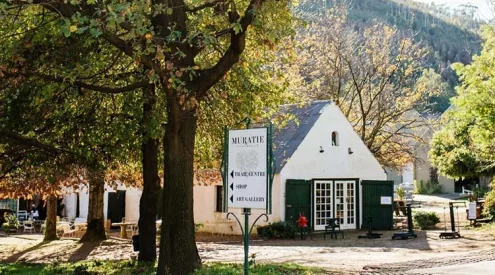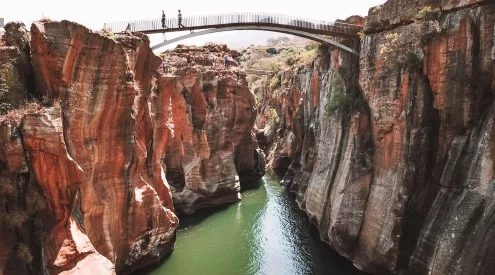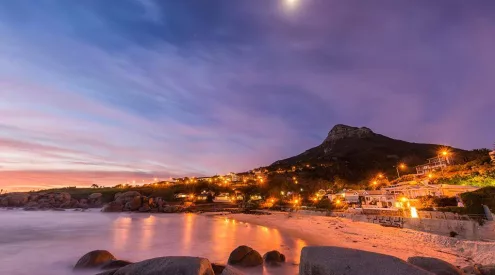The Karoo National Park is more than 88 000 hectares big with a predator-proof fence around its 175-km long boundary. Every day, the fence is patrolled by the field rangers, who inspect it for weak points and holes. The lions in the park haven’t once ventured out onto neighbouring sheep farms. Senior section ranger Johan de Klerk believes the big cats are more than happy with the amount of prey within the park’s borders.
On our last day in the park (before we move on to Gamkaberg Nature Reserve), I went for a late afternoon walk with 26-year-old Gavin Lottering, one of the field rangers. In the past, before the lions had been introduced, it was possible to walk wherever you wanted. These days, you have to be accompanied by an armed ranger or field guide. It’s somewhat of a pity that you can’t simply wander off by yourself, but I was more than happy to chat to Gavin. We walked to the top of Pointer Hill above the main rest camp. The views extended all the way south past the town of Beaufort West to the Swartberg, about 100 kilometres away. To the north is the park’s humungous landscape of koppies and kloofs: very impressive, and a worthwhile visit.
Gavin and his field ranger colleagues walk up to 20 km every day, patrolling the park’s boundaries and doing the necessary maintenance on the fence. Needless to say, Gavin is very fit! Thanks Gavin for a good walk!
On our way down, we also did the interesting Bossie Trail: an 800-metre loop that allows hikers to interpret the amazing array of plants that are found naturally in the park. There are about 60 on the list, and a handy brochure lists the plants which are marked on the trail. For plant lovers, it’s interesting. At first sight, a lot of the plants in the Karoo look alike, but there are several thousand species across this landscape.
I also walked the highly worthwhile Fossil Trail again. The fossils on display are truly fascinating. But it also makes one realise how privileged we are as a human race to be part of this almost incomprehensible thing called ‘Life On Earth’. For millions of years, creatures stranger than fiction roamed the earth, and were wiped out by a global catastrophic occurrence. Their skeletons were deposited more than 250 million years ago at the bottom of a huge floodplain, which filled with sediment more than two-kilometres high. This landscape eventually eroded to form what is the present-day Karoo.
It continues to erode and everything continues to change, on a geological timescale of billions of years that renders the age of man (and mammals, and all modern life actually) almost inconsequential.
I watched a very interesting BBC documentary on the universe recently, which emphasised that life on earth is only statistically possible for a small fraction of the age of the universe. Yet against all odds, you and I are here on earth, at this moment – to appreciate the miracle of life, and hopefully to respect our very tiny place in the truly larger scheme of things.
We have a right to be here, for sure, but so do all the other creatures with which we share our tiny planet. As the original American conservationist John Muir once wrote, ‘We all travel the Milky Way together, trees and men.’ (I know John Muir would expand that to include all living creatures and plants).
For more info on the various trails available in the Karoo National Park, visit www.sanparks.org/parks/karoo
Find the best places to stay in the Karoo with Getaway Accommodation.
Thanks again to my sponsors for making it all possible. CapeNature, South African National Parks, Ezemvelo KZN Wildlife, Eastern Cape Parks, iSimangaliso Wetland Park, Ford, Total, Evosat, Conqueror Trailers, Vodacom, Digicape, Lacie, Frontrunner, Safari Centre Cape Town, K-Way, EeziAwn, National Luna, Nokia , Goodyear, Global Fleet Sales, Hetzner, Clearstream Consulting and Escape Gear.


















